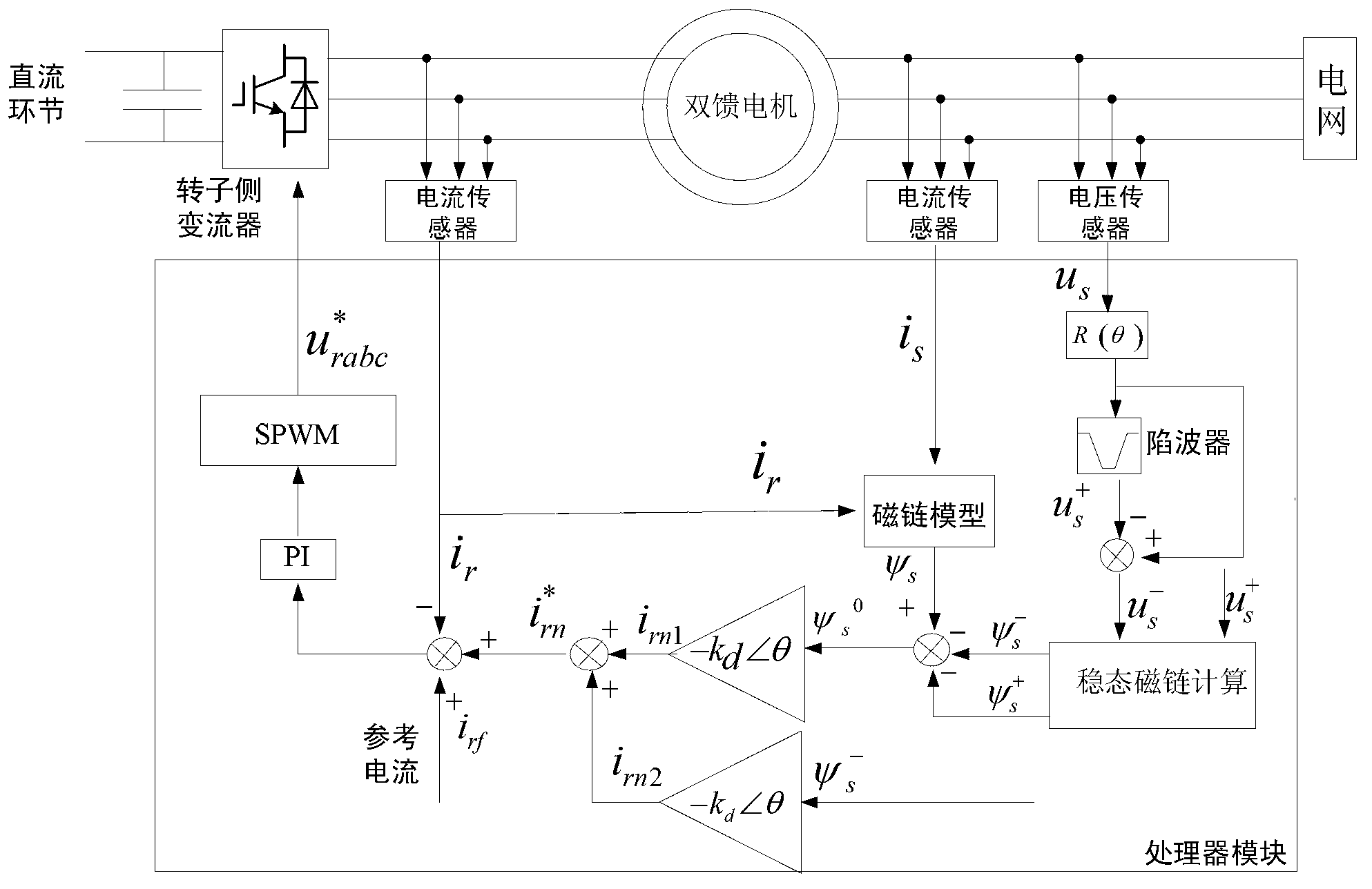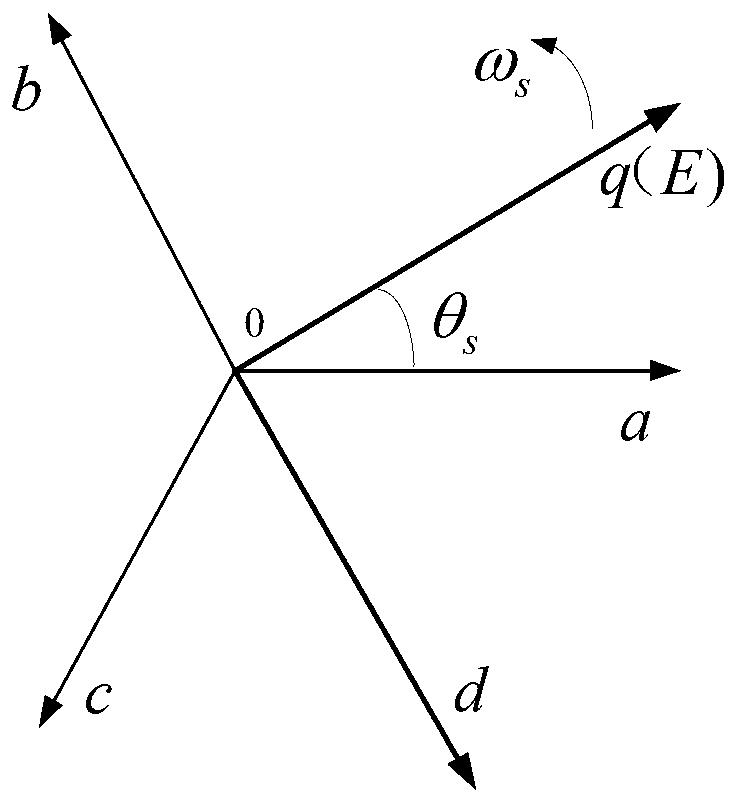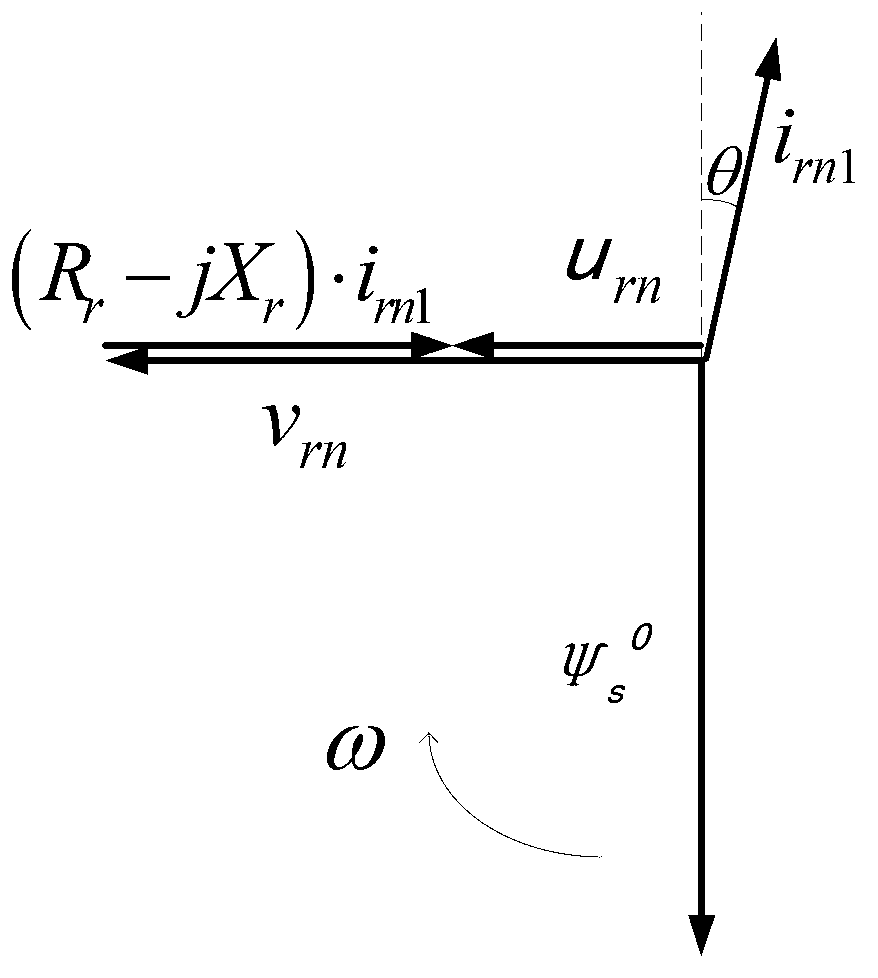Double-fed type wind generating set low-voltage-ride-through control method based on electromagnetic transient algorithm
A wind turbine, low voltage ride-through technology, applied in motor generator control, electronic commutation motor control, wind power generation, etc., can solve the problem that the transient voltage at the rotor end of the doubly-fed motor cannot be reduced to a minimum, and the transient voltage exceeds the voltage. Controllable range, out of control of double-fed wind turbines, etc., to achieve the effect of convenient software upgrade, expansion of fault range, and simple structure
- Summary
- Abstract
- Description
- Claims
- Application Information
AI Technical Summary
Problems solved by technology
Method used
Image
Examples
Embodiment Construction
[0048] see figure 1 , the DFIG in this embodiment includes: a DC link, a rotor-side converter, a DFIG, a power grid, a voltage sensor, a current sensor and a processor module. The basic working principle of the DFIG is as follows: : The processor module realizes the control of the rotor-side converter by modulating the control signal, and then the rotor-side converter inverts the DC voltage into three-phase AC current and injects it into the rotor side of the doubly-fed motor to realize the control of the doubly-fed motor, then The stator of the doubly-fed generator directly connected to the grid transmits power to the grid; a low-voltage ride-through control method for a doubly-fed wind turbine based on an electromagnetic transient algorithm is performed as follows:
[0049] Step 1: When the grid voltage falls and the fault occurs, the Hall voltage sensor and the Hall current sensor respectively detect the three-phase voltage u of the stator of the doubly-fed motor. s , stat...
PUM
 Login to View More
Login to View More Abstract
Description
Claims
Application Information
 Login to View More
Login to View More - R&D
- Intellectual Property
- Life Sciences
- Materials
- Tech Scout
- Unparalleled Data Quality
- Higher Quality Content
- 60% Fewer Hallucinations
Browse by: Latest US Patents, China's latest patents, Technical Efficacy Thesaurus, Application Domain, Technology Topic, Popular Technical Reports.
© 2025 PatSnap. All rights reserved.Legal|Privacy policy|Modern Slavery Act Transparency Statement|Sitemap|About US| Contact US: help@patsnap.com



